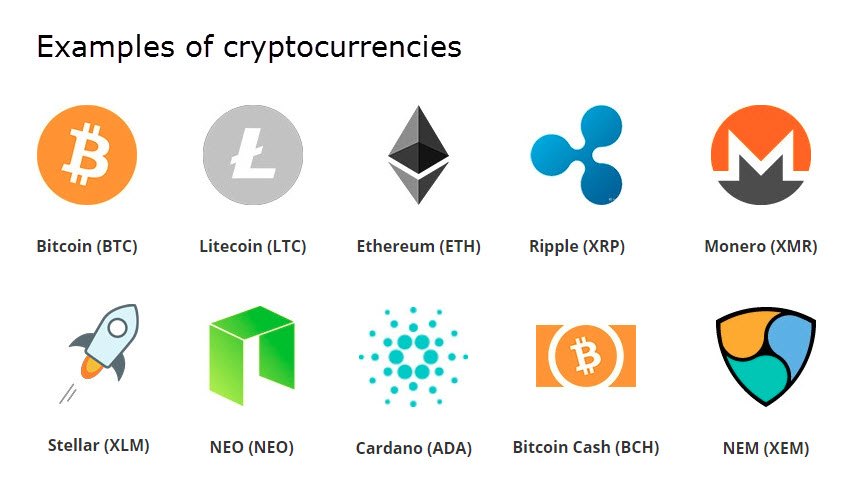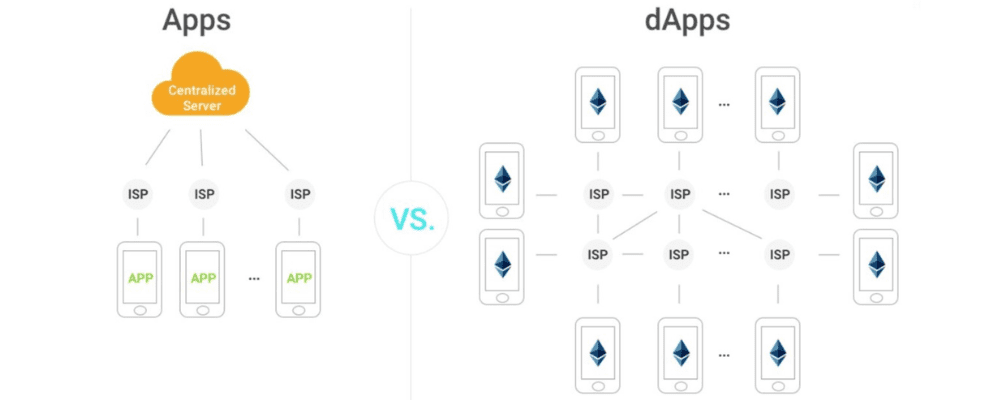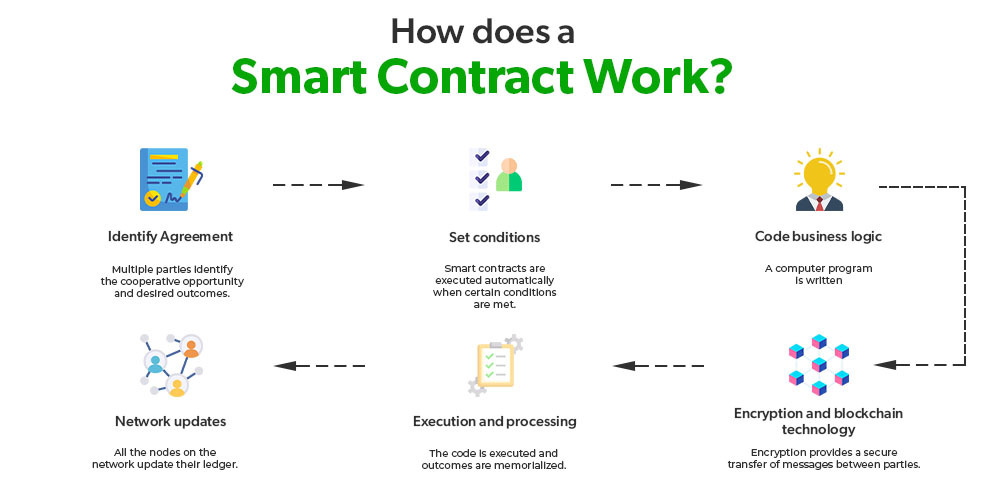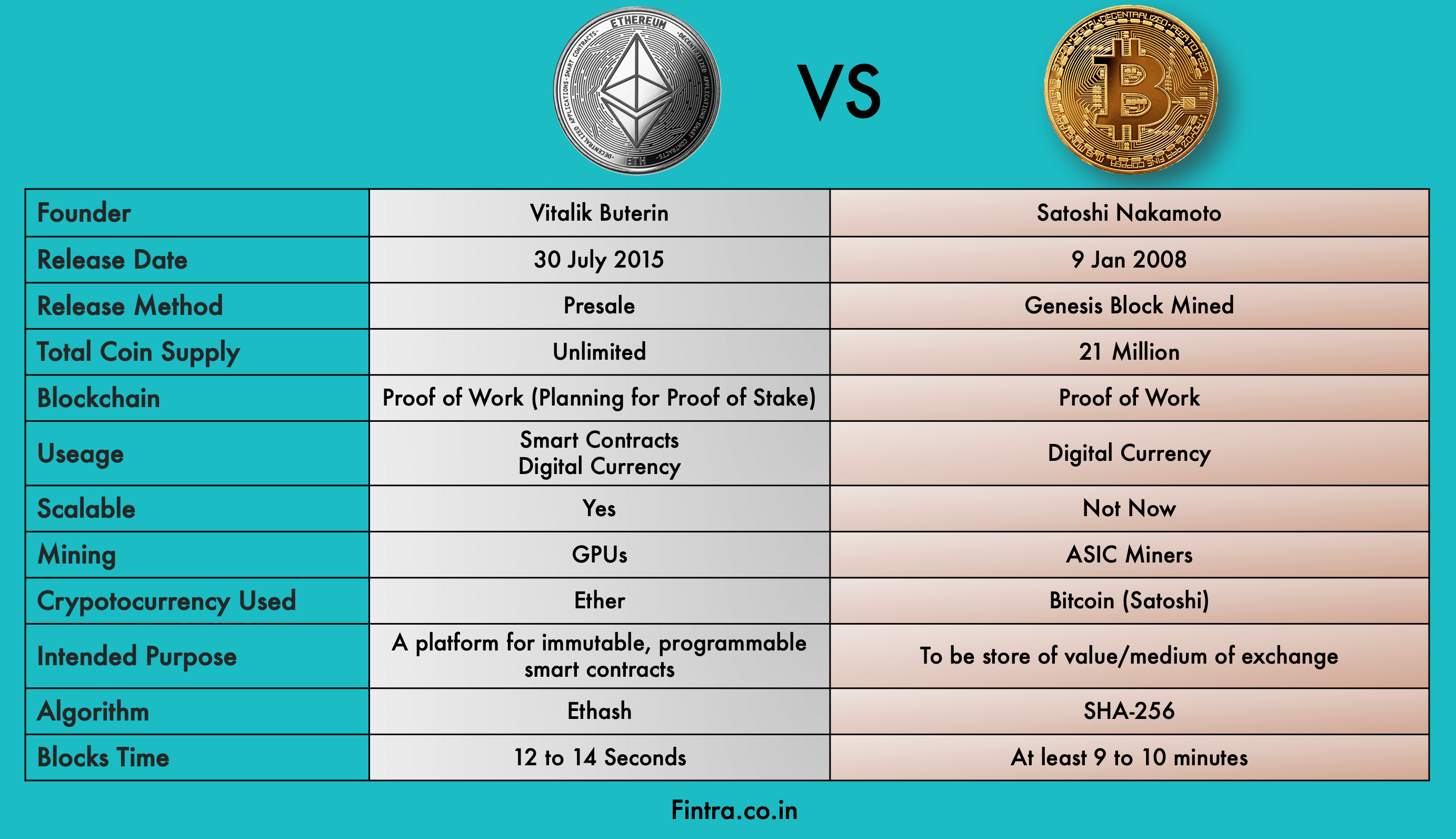Introduction
In the ever-evolving landscape of blockchain technology, Ethereum stands out as a groundbreaking platform that transcends digital currencies. Its decentralized nature and innovative contract capabilities open up numerous possibilities for developers, entrepreneurs, and enthusiasts. Whether you aspire to be a blockchain developer, have experience as a cryptocurrency investor, or are curious about this transformative technology’s potential, taking the essential step of commencing your journey on the Ethereum network will help you comprehend and harness its power.
This article will mainly focus on the Cryptocurrencies used in Blockchain Networks. You can refer to this article to get more knowledge about Blockchain Networks. We will discuss Decentralized Applications and Ethereum Cryptocurrency in detail in this post. Starting from the basics, you require a fundamental knowledge of Blockchain Networks. But before diving into that, let’s first discuss what cryptocurrencies are!

This article was published as a part of the Data Science Blogathon.
Table of contents
- What is Blockchain?
- What is Cryptocurrency?
- What is a Cryptocurrency Wallet?
- What is Ethereum Network?
- Turing Complete vs. Turing Incomplete
- What are Decentralized Applications?
- What is Ethereum Gas?
- What are the Types of Users in the Ethereum Network?
- What are the Components of Ethereum?
- What is Solidity?
- Bitcoin vs. Ethereum
- Frequently Asked Questions
What is Blockchain?
The need for secure and reliable digital transactions becomes more critical as the world becomes increasingly digital. Blockchain technology provides a way to record and transfer digital assets securely and reliably. Simply put, a blockchain is a digital ledger of all transactions. This ledger is distributed across a network of computers known as nodes. Each node has a copy of the ledger and verifies all new transactions. This decentralized system ensures that no single entity can control or tamper with the ledger. Blockchain technology has the potential to revolutionize the way we interact with the internet. The blockchain is an incorruptible digital ledger of economic transactions that can be programmed to record financial transactions and virtually everything of value. This makes blockchain technology extraordinarily secure and trustworthy. It also has the potential to revolutionize the way we do business.
For example, blockchain could create a decentralized marketplace where buyers and sellers can trade directly without needing a third party. This would be much more efficient and could reduce costs. Blockchain could also create a new type of internet where users control their data. This would vastly improve over the current internet, where data is centralized and controlled by a few large corporations. Also, it could enable us to make peer-to-peer payments without the need for a central authority, such as a bank. It could also create a more secure and efficient way to store and share data.
What is Cryptocurrency?
Cryptocurrencies use cryptography to safeguard their transactions and regulate the generation of new units. They are like digital or virtual tokens. Cryptocurrencies are decentralized and not governed by any one entity, including the government or financial institutions. The most well-known cryptocurrency is Bitcoin, but many other cryptocurrencies are available, such as Ethereum, Litecoin, and Ripple. Cryptocurrencies are often traded on decentralized exchanges and can also be used to purchase goods and services. Cryptocurrencies are often praised for their decentralized nature, as well as their security and privacy features. However, they have also been criticized for their volatile prices and potential for illegal use.
What is a Cryptocurrency Wallet?
A cryptocurrency wallet is a digital or physical wallet that stores your private and public keys, which you use to access your cryptocurrency. A cryptocurrency wallet is needed to send, receive and store your cryptocurrency. There are different types of cryptocurrency wallets, each with its distinct set of features. Some wallets are designed for a specific cryptocurrency, while others can store multiple cryptocurrencies. Some wallets are online, while others are offline. Cryptocurrency wallets can be divided into software, hardware, and paper.
Software wallets are accessed through an application on your computer or phone. They are the most convenient to use but are also the least secure. Hardware wallets are physical devices that look like USB drives. They are more secure than software wallets because they are not connected to the internet and are, therefore, not vulnerable to getting hacked. However, they are more challenging to use. Paper wallets are pieces of paper with your public and private keys printed. They are used to facilitate cryptographic transactions. These types of wallets are considered to be more secure than other forms of wallets.

What is Ethereum Network?
Ethereum is a decentralized platform that supports smart contracts, programs that execute exactly as intended with no chance of fraud or outside influence. This blockchain may be customized. It enables users to start ICOs and develop decentralized applications (dapps). These applications are powered by a specially developed blockchain, a potent worldwide shared infrastructure that can transfer value and reflect property ownership.
This makes it possible for developers to build markets, keep records of obligations or promises, transfer money following directives left behind in the past (like a will or a futures contract), and do a lot of other things that are still in the future without the need for a middleman or counterparty risk. Ethereum protocol is powered by ETH, the native cryptocurrency of the Ethereum blockchain, and it is an essential part of the web3 stack. The Ethereum protocol is Turing complete, meaning it can run any program.
Turing Complete vs. Turing Incomplete
There are two types of blockchain: Turing complete and Turing incomplete. A Turing complete blockchain can support all computations that can be done on a Turing machine. This means that a Turing complete blockchain can support all the same computations that a computer can perform. On the other hand, a Turing incomplete blockchain can only support a subset of computations that can be done on a Turing machine.
The main difference between these two types of blockchain is that a Turing complete blockchain can support all types of smart contracts, while a Turing incomplete blockchain can only support a limited number of smart contracts. This is because a Turing complete blockchain can support any computation, while a Turing incomplete blockchain can only support a limited number of computations. One example of a Turing complete blockchain is Ethereum. Ethereum can support all smart contracts because it is a Turing-complete blockchain. One example of a Turing incomplete blockchain is Bitcoin. Bitcoin can only support a limited number of smart contracts.
What are Decentralized Applications?
Decentralized applications run on a decentralized network instead of a single computer. These programs are often referred to as dApps. A dApp can be anything from a decentralized exchange to a social media platform. The one common thread between all dApps is that they are powered by a decentralized network, usually a blockchain. Decentralized networks are more secure and resilient than traditional centralized networks because there is no single point of failure. If one node in the network goes down, the others can continue functioning. Decentralized applications are still in their early stages of development, but there are already a few well-known dApps, such as Ethereum, Augur, and MaidSafe.

What is Ethereum Gas?
Ethereum gas is a measurement unit used to determine how much computational effort is required to execute a particular transaction or smart contract on the Ethereum blockchain. In other words, it is a way of measuring how much “work” is required to be done to complete a transaction. The more complex the transaction, the more gas it will require. For example, a simple transfer of ETH from one address to another requires less gas than a smart contract that involves data storage, calculation, and other operations.
Gas is essential because it prevents the Ethereum network from overloading many transactions. If a transaction requires too much gas, it will be rejected by the network. Users are not charged for gas directly. Instead, they must pay a small amount of ETH for each transaction that they make. This ETH is then used to pay the miners who confirm the transactions on the blockchain.
What are the Types of Users in the Ethereum Network?
There are three types of users in the Ethereum network:
- Full node: A full node is a computer that stores a copy of the entire Ethereum blockchain. Full nodes help to keep the network secure by validating and propagating transactions and blocks. They also provide the necessary data for light clients to access the network.
- Light client: A light client is a computer that does not store a copy of the blockchain but instead relies on full nodes to provide data. Light clients can be used to send and receive transactions and to interact with smart contracts.
- Contract: A contract is a program that runs on the Ethereum network and can store data and execute transactions. Contracts can be used to create decentralized applications or to interact with other contracts.
What are the Components of Ethereum?
Smart Contracts
Smart contracts are self-executing contracts that are written on a blockchain platform. A smart contract is like a traditional contract, but it is executed and enforced automatically by the network. This means there is no need for a third party to mediate or enforce the contract. Smart contracts have the potential to revolutionize the way we do business. They can automate many transactions, from financial to supply chain management. One of the most promising applications of smart contracts is in the area of financial services. Smart contracts can streamline the process of securities trading, making it more efficient and less vulnerable to fraud.
Another potential application of smart contracts is in the area of identity management. Smart contracts can create a decentralized identity management system that is more secure and efficient than the current centralized system. There are many other potential applications of smart contracts. The possibilities are limited only by our imagination.

Working of Smart Contract
Smart contracts are executed by the Ethereum Virtual Machine (EVM), which runs on every node in the Ethereum network. The EVM has its own internal Turing-complete programming language, which allows it to execute any code. When a smart contract is deployed, its code is stored in the blockchain and can not be changed. However, the contract can be called by other contracts or external accounts. When a contract is called, its code is executed by the EVM. The EVM has access to the contract’s storage, a persistent key-value store. The EVM can also send messages to other contracts or external accounts.

Ether
Ether is the native cryptocurrency of the Ethereum network. It is used to pay transaction fees and computational services on the Ethereum network. Ether is a decentralized currency, like Bitcoin. However, unlike Bitcoin, Ether is not meant to be a global currency. Instead, it is intended to be used as fuel for the Ethereum network. The Ethereum network is a decentralized platform that runs smart contracts. These contracts are programs that run exactly as programmed without any possibility of fraud or third-party interference.
Ether is used to pay for the computational power needed to run these smart contracts. This is similar to how oil is used to power cars or coal is used to power trains. Ether is also used to pay transaction fees on the Ethereum network. Every time a user sends a transaction, they must pay a small fee to have their transaction processed by the network.
Ethereum Clients
To use the Ethereum network, you need to have an Ethereum client. An Ethereum client is software that allows you to interact with the Ethereum network. It is your gateway to the Ethereum network. There are different types of Ethereum clients. The most popular ones are Geth and Parity. Geth is the Go implementation of the Ethereum client. Parity is the Rust implementation of the Ethereum client. There are also other clients like Aleth and Trinity.
Each client has its advantages and disadvantages. Geth is the most popular client. It is easy to use, and it has a lot of features. Parity is more lightweight, and it is faster than Geth. Aleth is more focused on security. Trinity is still in development. You can choose any client you want. It would be best if you used a client you are comfortable with. If you are still deciding which client to use, you can try out different ones and see which one you like the most.
Ethereum Virtual Machine (EVM)
The Ethereum Virtual Machine (EVM) is a Turing-complete virtual machine that runs on the Ethereum network. It is used to run smart contracts and decentralized applications (apps). The EVM is sandboxed, meaning that the code running on the EVM has no access to the network or filesystem. This makes it a very secure environment for running apps. The EVM is also Turing-complete, meaning it can run any code. This makes it very flexible and powerful. The EVM is executed on every node in the Ethereum network. This ensures that all dapps running on the network are secure and have no single point of failure. The EVM is a crucial part of Ethereum and makes it a powerful platform for running dapps.
Ether Scripter
Ether Scripter is a smart contract programming language that enables developers to create contracts and decentralized applications (dapps) on the Ethereum blockchain. It is a high-level language similar to JavaScript and is designed to be easy to learn and use. Ether Scripter is also Turing-complete, meaning that it can be used to create programs that can solve any computational problem.
What is Solidity?
Solidity is a smart contract programming language for the Ethereum blockchain. It was developed by the Ethereum Foundation to enable developers to build decentralized applications (dapps) on the Ethereum blockchain. Solidity is a statically typed, contract-oriented programming language. C++, Python, and JavaScript influence it. Solidity is designed to target the Ethereum Virtual Machine (EVM). Solidity is used to write smart contracts, self-executing contracts that live on the Ethereum blockchain. A smart contract is like a traditional contract, but it is written in code and stored on the blockchain. Solidity is a compiler that translates Solidity code into Ethereum Virtual Machine (EVM) bytecode. The EVM is a decentralized platform that runs smart contracts. Solidity is still under active development and still needs to be stable. However, it is already being used by several projects, including Augur, Gnosis, and Maker.
Bitcoin vs. Ethereum
The world of cryptocurrency is vast and ever-changing. With new coins and tokens being released all the time, it can take time to keep track of everything that’s going on. Two of the most popular and well-known cryptocurrencies are Bitcoin and Ethereum. Though they are both digital currencies, they have a few key differences. Bitcoin was the first cryptocurrency to be created and remains the most well-known. It was built in 2009 as a peer-to-peer electronic cash system. Bitcoin is decentralized, meaning there is no central authority or mediator. Transactions are verified by a network of nodes and recorded on a public blockchain.
Ethereum was created in 2015 and is often referred to as a “world computer.” It is a decentralized platform that runs smart contracts. These applications run exactly as programmed without any possibility of fraud or third-party interference. Ethereum also has its cryptocurrency, called Ether. Another difference is that Ethereum has a Turing complete language which allows for the creation of decentralized applications. Bitcoin does not have this capability. Finally, the block time for Ethereum is much faster than Bitcoin. This means that transactions on the Ethereum network confirm much quicker than those on the Bitcoin network.

Conclusion
In this article, we have discussed Ethereum Protocol in detail. There are many applications of Ethereum. It is also used to power the decentralized finance (DeFi) ecosystem. DeFi applications are built on Ethereum and enable users to lend, borrow, trade, and invest without a central intermediary. Ethereum is used as a platform to launch other cryptocurrencies. Its primary applications are decentralized applications and initial coin offerings (ICOs). An ICO is a fundraising method where new projects sell their underlying crypto tokens in exchange for bitcoin and Ether. ICOs are a form of crowdfunding and have become a popular way to raise capital for new blockchain projects.
A growing number of companies also use Ethereum technology to power their businesses. Some of the most notable are Microsoft, JPMorgan, and Amazon. These companies use Ethereum to build decentralized applications (dapps) and create smart contracts. Ethereum is a versatile platform that can be used for various purposes, and these companies are just beginning to scratch the surface of its potential. Microsoft is using Ethereum to develop a decentralized identity system. This system will allow users to control their data and identities. JPMorgan is using Ethereum to build a blockchain platform for its business operations while Amazon is using Ethereum to create a decentralized marketplace.
Key Takeaways
- Firstly, we have discussed the importance of blockchain technology in the current century and the use of cryptocurrencies.
- Then we discussed the Ethereum Protocol and all its significant components like Smart Contracts, Ether, EVM, etc.
- After that, we discussed the critical differences between Ethereum and Bitcoin protocols.
- Finally, we have concluded the article by discussing the applications of Ethereum and the companies that use it.
That’s all for now. I trust you liked reading the post. Please feel free to comment below if you have any questions or ideas. You may also add me as a connection on LinkedIn.
Could you check my other articles also?
Thanks for reading, 😊
Frequently Asked Questions
A. The Ethereum network is a decentralized blockchain platform that enables smart contracts and the creation of decentralized applications (DApps) using its native cryptocurrency, Ether (ETH).
A. The choice of Ethereum network depends on your use case. The Ethereum mainnet is used for real transactions. Testnets like Ropsten, Rinkeby, and Goerli are for testing and development.
A. No, Ethereum mainnet and ERC-20 are not the same. Ethereum mainnet is the live network, while ERC-20 is a standard for creating tokens on the Ethereum blockchain.
A. Ethereum refers to the entire blockchain platform, including its mainnet and testnets. The Ethereum network specifically denotes the operational blockchain system, which includes the mainnet and associated testnets.
The media shown in this article is not owned by Analytics Vidhya and is used at the Author’s discretion.





